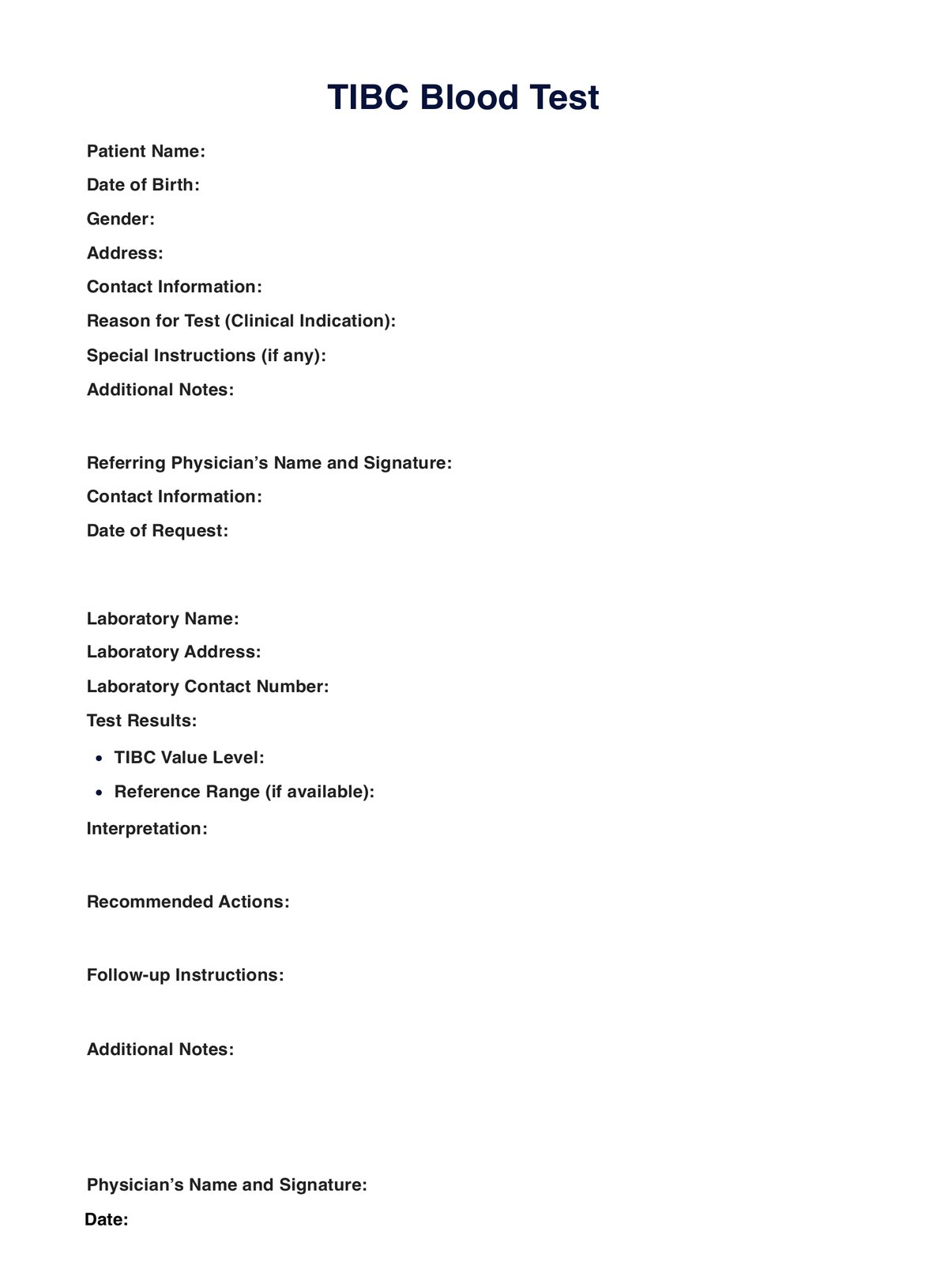General physicians, their assistants, nurses, and a specialist like a hematologist are the healthcare practitioners who typically request a TIBC blood test.

TIBC Blood Test
Explore the clinical uses and result interpretations of the TIBC blood test with our guide, and enhance health. Click here for details and to download our free template.
Use Template
TIBC Blood Test Template
Commonly asked questions
TIBC blood tests are typically requested during an iron panel and used to confirm suspicions/diagnosis or monitor an existing condition and their treatment.
Collection will only take a few minutes, but typically results will take around 1 to 2 days to come back. Do note that it can take as long as three days, depending on the laboratory.
EHR and practice management software
Get started for free
*No credit card required
Free
$0/usd
Unlimited clients
Telehealth
1GB of storage
Client portal text
Automated billing and online payments











